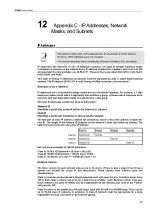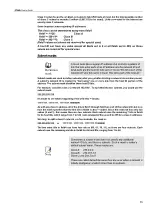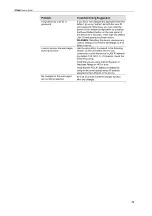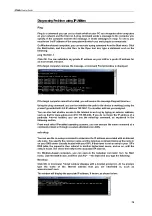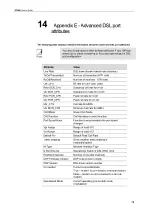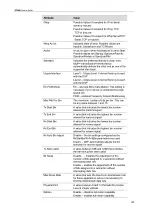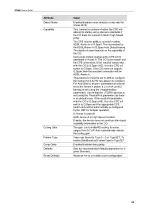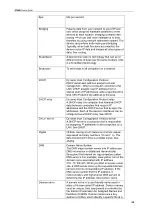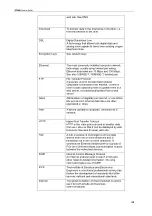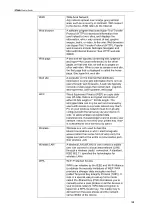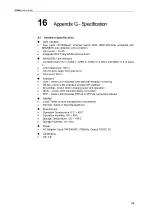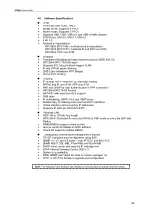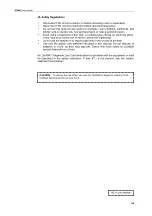
X7968r
User’s Guide
web site. See DNS.
Download
To transfer data in the downstream direction, i.e.,
from the Internet to the user.
DSL
Digital Subscriber Line
A technology that allows both digital data and
analog voice signals to travel over existing copper
telephone lines.
Encryption keys
See network keys
Ethernet
The most commonly installed computer network
technology, usually using twisted pair wiring.
Ethernet data rates are 10 Mbps and 100 Mbps.
See also 10BASE-T, 100BASE-T, twisted pair.
FTP File
Transfer
Protocol
A program used to transfer files between
computers connected to the Internet. Common
uses include uploading new or updated files to a
web server, and downloading files from a web
server.
Gbps
Abbreviation of Gigabits per second, or one billion
bits per second. Internet data rates are often
expressed in Gbps.
Host
A device (usually a computer) connected to a
network.
HTTP Hyper-Text
Transfer
Protocol
HTTP is the main protocol used to transfer data
from web sites so that it can be displayed by web
browsers. See web browser, web site.
Hub
A hub is a place of convergence where data
arrives from one or more directions and is
forwarded out in one or more directions. It
connects an Ethernet bridge/router to a group of
PCs on a LAN and allows communication to pass
between the networked devices.
ICMP
Internet Control Message Protocol
An Internet protocol used to report errors and
other network-related information. The ping
command makes use of ICMP.
IEEE
The Institute of Electrical and Electronics
Engineers is a technical professional society that
fosters the development of standards that often
become national and international standards.
Internet
The global collection of interconnected networks
used for both private and business
communications.
85


